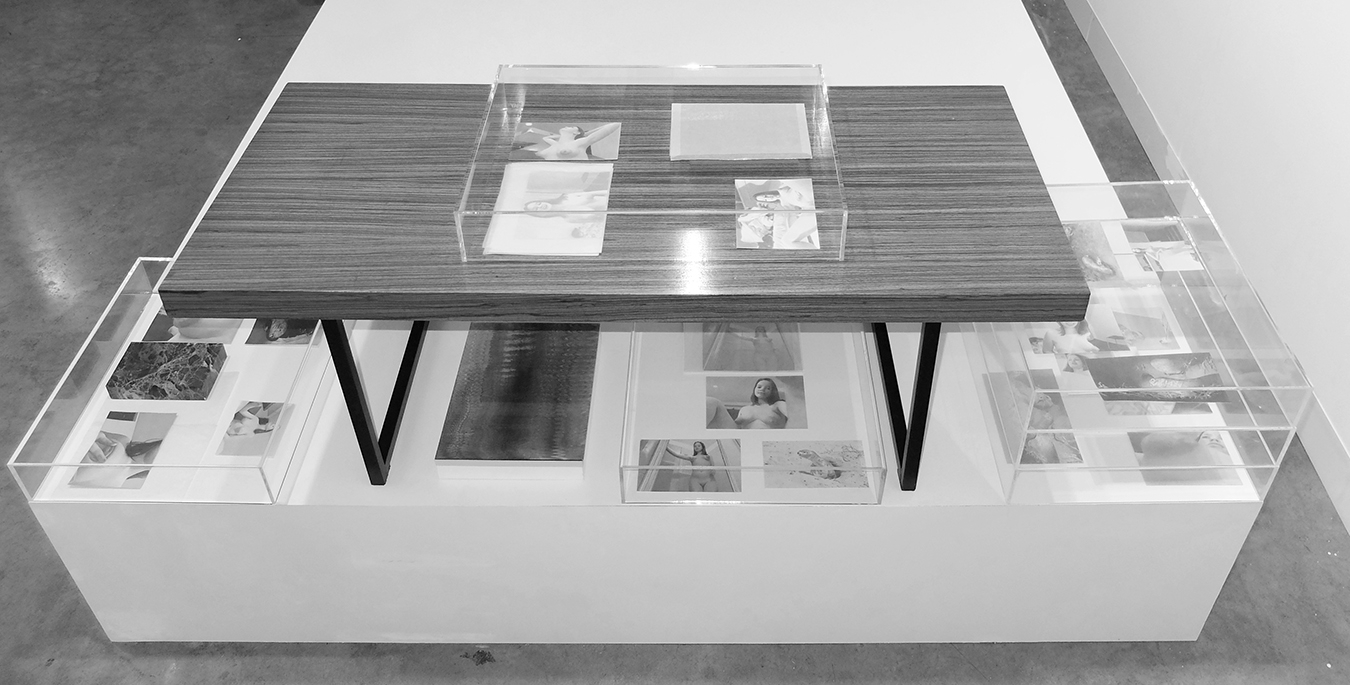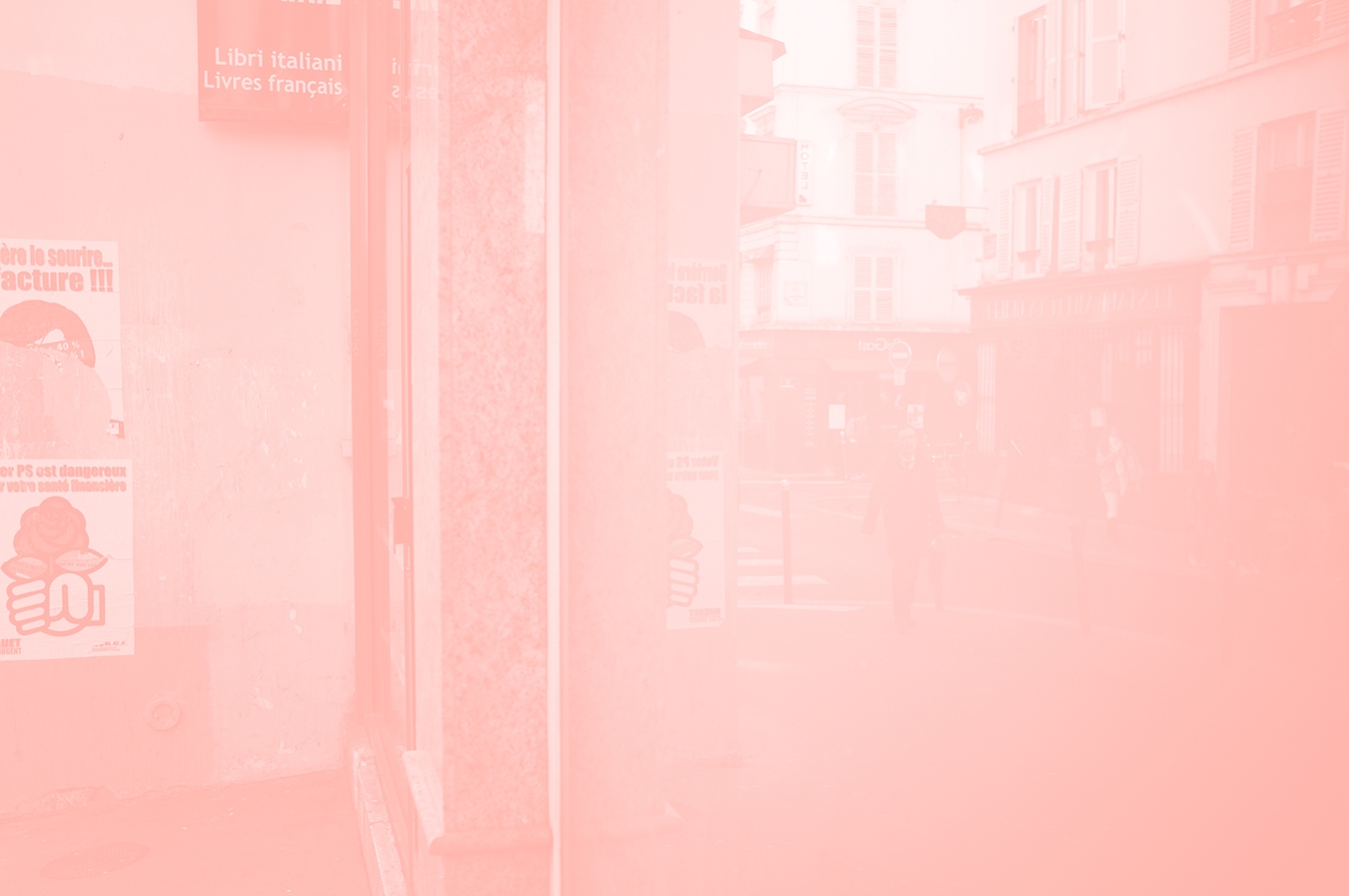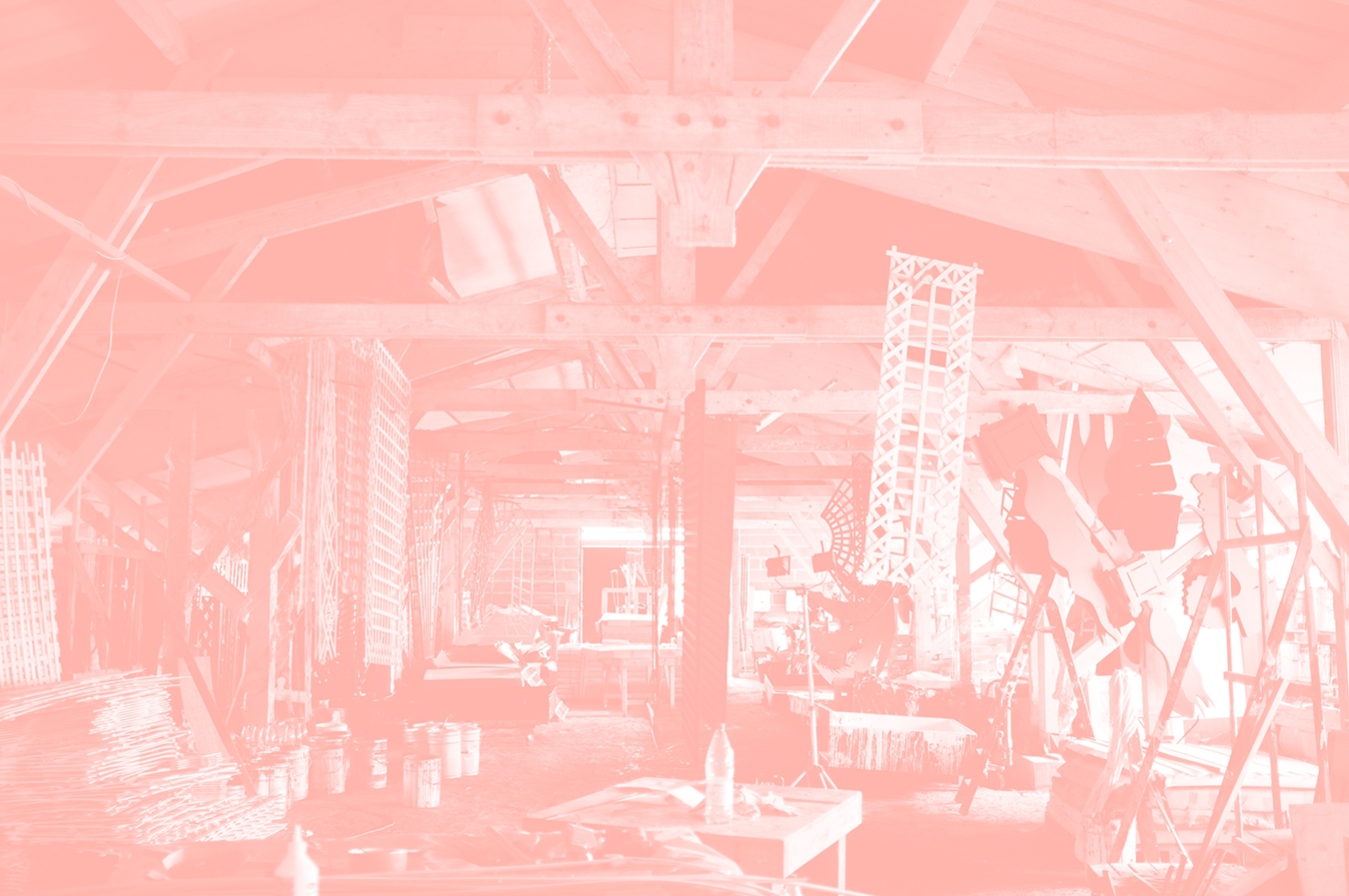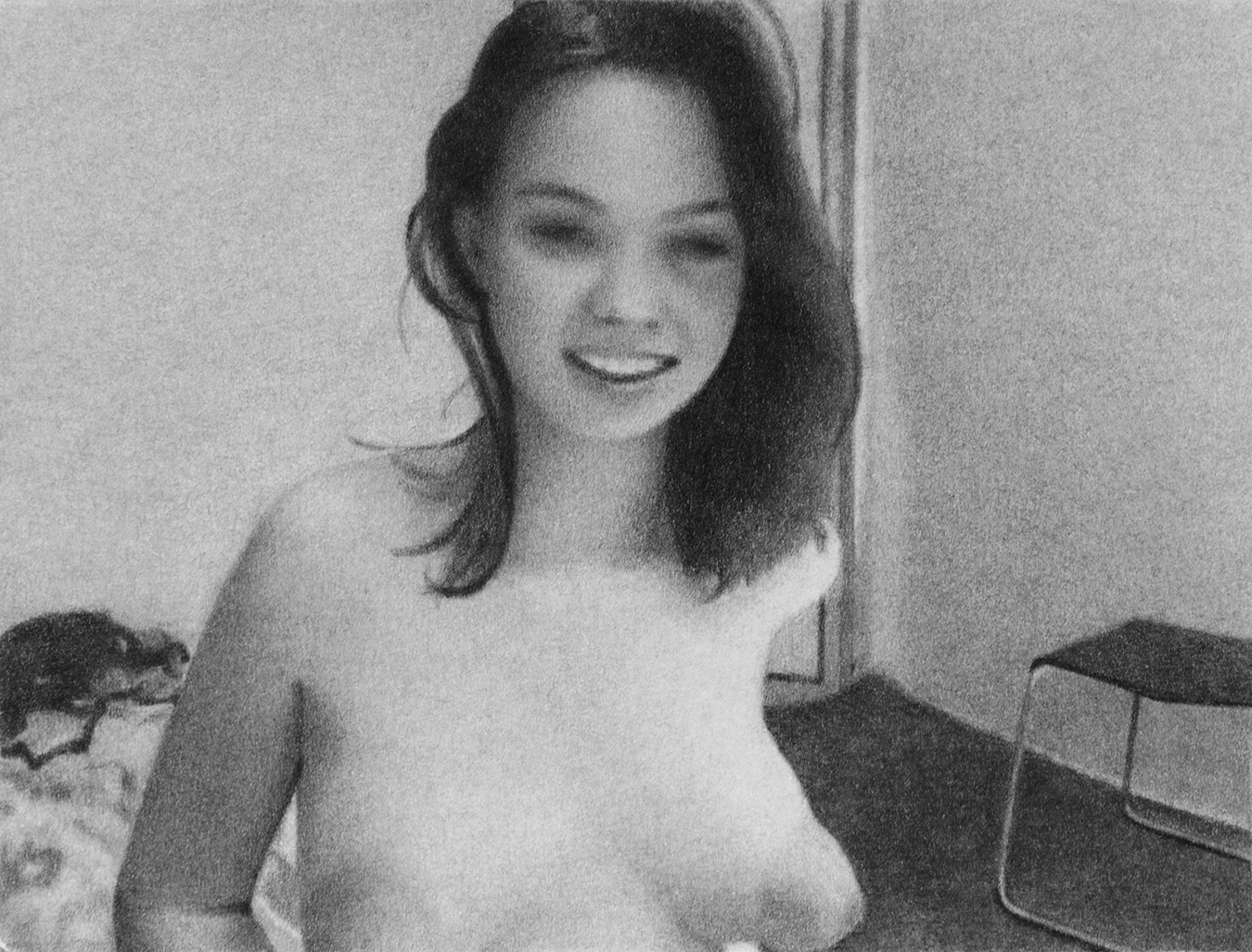Julien Carreyn développe une pratique artistique basée sur la fabrication d’images, les modes d’apparition, d’organisation, de classement et de montage des images. Il est l’auteur d’un corpus d’images très dense où photographies, dessins, et peintures se côtoient sans hiérarchie, explorant des territoires aussi variés que l’est sa culture transversale de l’image et qui englobe l’histoire de l’art et le cinéma, la musique électronique, mais également des territoires plus «underground» comme la bande dessinée érotique des années 70, les manga…
Pour Positions, Julien Carreyn propose un projet conçu comme un jeu de piste réduit au strict minimum : un podium central et deux socles imposant une circulation dans l’espace autour de quelques images-clés d’un film qui n’existe plus, ou pas, ou pas encore.
Sur les tirages pigmentaires présentés aux murs, une couleur rose dérivée du Pantone 169C se substitue au noir, enveloppant ces images à l’apparence banale - scènes de rue de Paris, objets quotidiens, intérieurs familiers - dans une atmosphère crépusculaire à la douceur bienveillante.
Sur le podium central est disposée une table signée Pierre Guariche, designer français (1926-1995), membre de l’Union des Artistes Modernes, sur laquelle repose la bande-annonce d’une série de vingt-cinq dessins. Sont présents également au centre de l’espace deux socles sur lesquels repose un ensemble de vitrines en plexiglas présentant des documents préparatoires et/ou complémentaires à l’accrochage, sous forme de photos et dessins empilés. Ces images superposées instaurent des jeux de transparence, d’effacement, se moquant de toute hiérarchie entre documents, archives et oeuvres d’art dont le trait commun est qu’ils sont tous réalisés par l’artiste.
A une époque où les toujours nouveaux modes de communication nous imposent un système qui semble redéfini en permanence, cet environnement esthétique - survivance d’un prestige français supposé rencontrant les signes d’une mondialisation subie - révèle l’existence d’un monde qu’on ne sait plus, ou pas, ou pas encore, définir.
Julien Carreyn décrit ‘Sublimation Thermique’ comme le scénario d’un film de science-fiction dont l’action se déroule dans un pays contaminé par un gaz étrange, un smog, saisissant tout le monde dans un engourdissement éthéré. Ce gaz peut être interprété de différentes manières : internet, la radioactivité, la France de 2014… En choisissant de symboliser cette contamination par la coloration du pantone 169C, l’artiste emploie un concept qui rencontra quelques rares exemples au cinéma durant le siècle dernier, dans les années 1960/70 : Solaris (Tarkovski), Le monde sur le fil (Fassbinder), La Jetée (Chris Marker) trois films de S.F. dont l’élégance due à un manque de moyens illuminait le questionnement introspectif (qui aurait été parasité par une débauche d’effets spéciaux).
Au sein de ce dispositif non ostentatoire aux moyens de production assez modestes - l’artiste imagine ce fragment de récit labellisé S-F mêlant le mystère à l’émotion, le témoignage à l’imaginaire, le passé au futur, et le jeu à l’étude.
S’agit-il d’un film, d’un pitch, d’un clip, d’un making-of ou d’un mood-board ?
Cette couleur évoque-t-elle l’ancien (délavée, lointaine) ou le moderne (lumineuse, uniforme) ?
Ces dents arrachées sont-elle sensuelles ou morbides ?
Ce socle est il un présentoir (pour poser la vitrine) ou un banc (pour s’asseoir et regarder l’accrochage) ?
Cet environnement est-il domestique (bureau Louis Philippe) ou institutionnel (socle blanc muséal) ?
Qui a-t-on voulu photographier, Bernard Cazeneuve dans l’hémicycle ou une jeune fille nue portant des lunettes ?
Doit-on mélanger l’érotisme et la politique ?
Le privé et le public ?
Cette photo d’un atelier de fabrication artisanale de treillages rend-elle hommage à Kubrick ou à Rohmer?
Ces images sont elles artistiques ou documentaires ?
Sont-elles drôles ou tristes ?
Est ce la fin d’une civilisation ou le début d’une autre ?
Julien Carreyn, 2014





